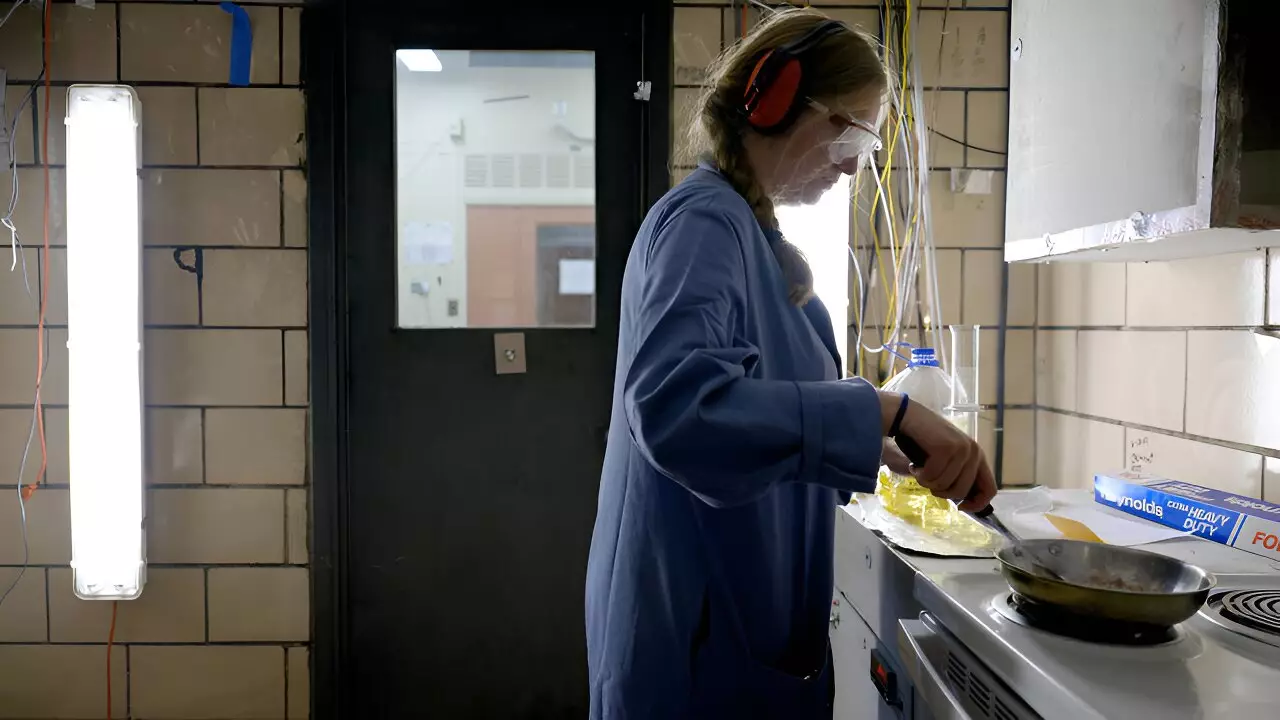Fire safety remains a paramount concern in modern households, and a recent study spearheaded by NIST fire researcher Emma Veley showcases the complexities involved in determining how effectively smoke detectors function. Armed with the right protective equipment, including safety glasses and a lab coat, Veley conducted experiments in a specially equipped laboratory designed to scrutinize the behavior of smoke alarms in the face of common cooking scenarios. With advanced sensors and a multitude of smoke detectors poised in the ceiling, this research endeavors to assess how well these devices discern between cooking incidents and actual fires, aiming to mitigate the nuisance alarms that plague many homes.
The study addresses a critical yet often overlooked issue: smoke detectors have become so adept at identifying fires that they occasionally misinterpret cooking activities—which invariably produce smoke—as an imminent threat. Lead author Amy Mensch emphasizes the potential risk of this situation: when homeowners disable smoke detectors in response to consistent false alarms triggered by cooking, they inadvertently jeopardize their fire safety.
The Evolution of Smoke Alarm Standards
To ensure effective smoke detection, alarm systems must adhere to stringent safety standards. The Underwriters Laboratories (UL) has long defined these standards, most notably UL 217, which serves as the benchmark for smoke detectors. Developed with contributions from fire safety professionals and researchers, including those associated with NIST, UL 217 has undergone significant enhancements since its inception in the 1970s.
The adoption of smoke alarms in homes represents a significant triumph in fire safety; the prevalence of these devices increased dramatically, shifting from less than 10% in 1975 to over 95% by 2000. This surge in adoption resulted in a tangible reduction in fatalities from domestic fires, further validating the importance of rigorous safety standards. The release of an updated version of UL 217—the eighth edition—reflects the continual evolution of fire safety standards, with a specific focus on minimizing nuisance alarms that arise from commonplace cooking activities.
The latest iteration of UL 217 introduces a strategic focus: it aims to detect genuine fire hazards while avoiding false alarms triggered by cooking. This necessity arose, in part, due to changes in domestic materials. Modern household items, such as foam-stuffed sofas, combust more rapidly than older cushioning materials, resulting in different fire dynamics. As fire detection technology evolves, it’s crucial that smoke alarms keep pace.
The two primary types of smoke detectors—photoelectric and ionization—each possess distinct strengths in identifying smoldering and flaming fires, respectively. To simplify consumer choices, the new standards require that all smoke detectors effectively cater to both fire types. However, the challenge lies in ensuring that increased sensitivity does not lead to more nuisance alarms, prompting the introduction of a new nuisance alarm testing protocol. This test evaluates whether alarms can withstand environmental challenges, such as smoke from cooking, without being triggered.
Despite the thoughtful revisions to smoke alarm standards, the NIST team’s comparisons between new and old smoke detectors produced varied results. Although the newer devices are designed to better identify types of fires while minimizing nuisance alarms, tests revealed that their performance in real-world cooking scenarios is not uniformly superior to that of older models. Thomas Cleary, a key figure in the research, noted that the advancements did not lead to a definitive reduction in false alarms across all cooking scenarios, indicating that while progress has been made, there is still work to do.
Overall, the intent behind these upgrades is to provide enhanced fire detection capabilities without exacerbating the annoyance of nuisance alarms. For individuals experiencing persistent issues with unwanted alarms, Cleary suggests practical strategies: positioning detectors away from cooking zones, improving kitchen ventilation, and utilizing the built-in “hush” features that many modern alarms offer. Surprisingly, upgrading kitchen appliances may also contribute positively, as newer stove technologies are less likely to trigger false alarms.
The implementation of updated smoke detector standards will occur gradually, with manufacturers allowed to sell their existing inventory of older devices. Although consumers aren’t mandated to replace their detectors immediately, the eventual adoption of these new standards is essential for enhancing fire safety in homes. NIST’s ongoing studies will continue to address the complexities associated with smoke detection, proving that even experts encounter challenges related to nuisance alarms.
As fire safety mechanisms evolve, the aim remains constant: to keep households safe without succumbing to needless interruptions from false alarms. By refining detection technology and improving standards, researchers hope to pave the way for a future where homeowners can confidently rely on their smoke alarms to perform their critical life-saving function without the nuisance of erroneous alerts.


Leave a Reply